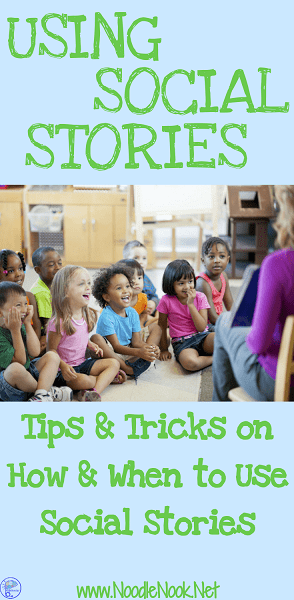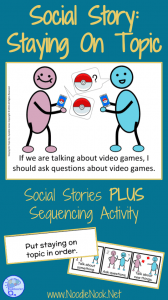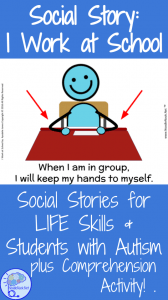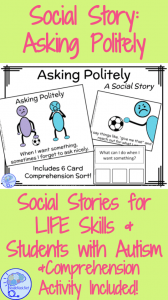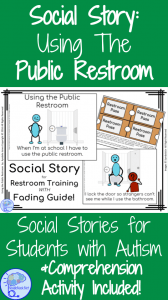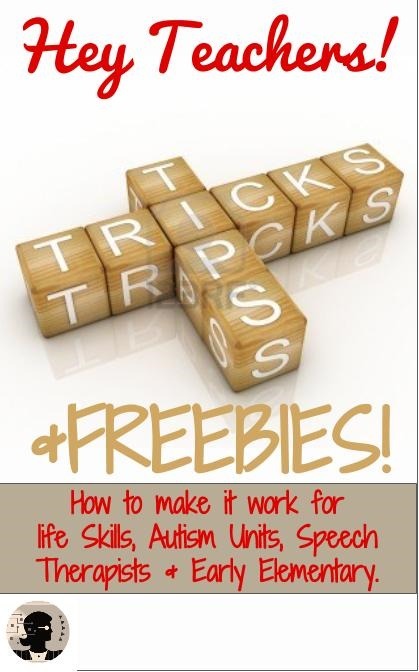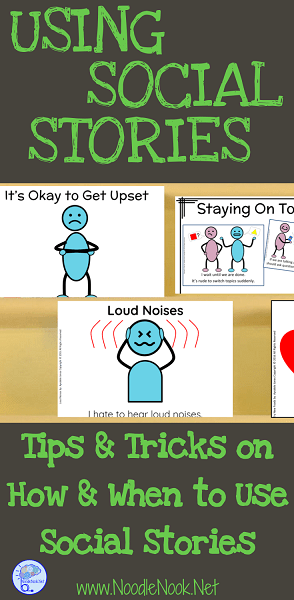Using Social Stories in the Classroom
I love using social stories. So many of the students I work with in the classroom really benefit from having direct instruction on social rules and behavior. When the model behavior is written down on paper for me to read to a student, a student to read through alone, or an aide to read aloud to a small group it makes the entire process of teaching social skills easier.
Who Can Benefit From Social Stories?
Social stories are not a silver bullet… they will not work with every students. BUT I have used them over and over through the years and have been pretty successful with them. It helps that I like to use them and have ones in the classroom that met the needs of many student behavior problems. In order to be effective to target a specific problem behavior, you will want to create a story that addresses the specific function of the behavior as well as the prefered target behavior.
If you are addressing some general rules, procedures and behaviors, like lining up, raising hands, or rules for using the bathroom and for when there is a substitute, then general social stories will do the trick for most.
When to Use Social Stories
I use most of my social stories on a constant rotation in the classroom. I read them during silent reading, have copies in the student’s library, and keep a couple of targeted ones in my cool down corner. I want them to be ready and accessible.
Obviously, using social stories before a problem behavior occurs to teach a student what they should do is ideal, but you can also use them after a problem behavior to discuss what the better choices were.
How to Use Social Stories
First, you will want to find time to read through the target stories. You don’t need to work on one book or skill in isolation, but can interweave several of them into your day and week.
Next, as you’re reading through the stories, you will want to add in some role play so a student can practice the skill in a controlled environment.
Finally, you also need to add some question and answer to the reading by asking things like “What should you do when this happens?” and more to be sure a student is understanding what is being read.
If you want to see real and lasting results, you will have to be consistent with using social stories and do all of the steps above as well a model the target behavior as often as possible.
Crucial Tips on Using Social Stories
Social stories will not work in isolation when you are targeting a severe problem behavior. You will need to include some ABA, behavior modification, and more to make a real and meaningful change in behavior. With that said, social stories are a great addition to the arsenal!
Stay strong and social story on!


